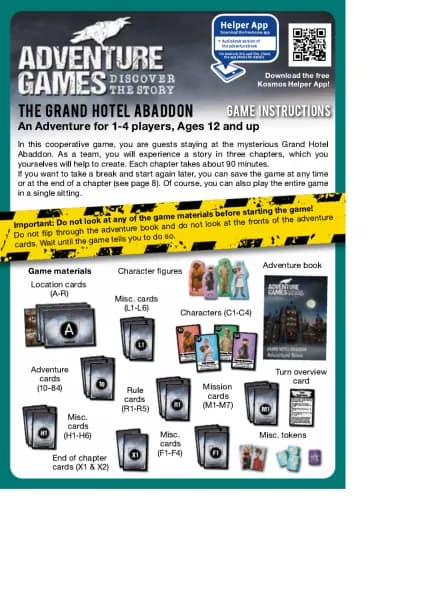Thames & Kosmos Electro Chem Clock handleiding
Handleiding
Je bekijkt pagina 2 van 2

ATOMS, IONS,
AND ELECTRICAL
CHARGE
All the substances that make up our world,
such as air, water, and rocks, are made of tiny
building blocks known as
atoms.
For a long
time, scientists thought that these building
blocks could not be broken down any farther,
although we know better today.
In fact, atoms are composed of even smaller
particles. These include a nucleus, which
contains positively-charged protons, around
which fly tiny, negatively-charged
electrons.
Normally, an atom has an equal number of
protons and electrons, meaning that it has
neither a positive nor a negative charge — in
other words, it is
electrically neutral.
If the number of electrons doesn’t match the
number of protons, the atom has a positive
or negative
charge.
A charged atom is
known as an
ion.
EXPERIMENT 3
EXPERIMENT 2
How to Set Your Clock
Does It Have to Be Lemonade?What Does the Display Show? Battery Power for Your Clock Check It Out
Under the display, you will
see two buttons:
A
and
B
.
Your clock has two display
modes:
WHO INVENTED THE
BATTERY?
The first working battery, a so-called
voltaic
pile,
was built around 1800 by the Italian
scientist
Alessandro Volta.
This highly
significant invention in turn made it possible to
conduct research into electricity.
Start by releasing all wires from the contact
springs and pulling them out through the
assembly board from underneath. Remove the
contact springs from the assembly board. Pull
the metal sheets out of the cup of liquid and rinse
them off. Take the cup off of the assembly board.
Pour the liquid from the cup down the drain.
Rinse out the cup and clean the sink to avoid any
stains.
Dry all the pieces with a paper towel and place
them back in their packaging.
Time Display
This shows the time on the display, in hours and minutes. When you push
B
, it
shows a date display — the month and the day. After a few seconds, the time will be
displayed again automatically.
Alternating Display
By pushing
A
, you switch to the alternating display. At a rate of once per
second, the display will alternate between time and date. Then, if you push
B
,
the seconds will be shown.
If you then push
B
again, it takes you back to the time display.
By pressing
B
, you can set the current hour. The displayed number increases by
1 with every push, and switches back to 1 after 12.
You will see that there is a letter A behind the number, which stands for a.m. or
morning. After you press 12 times, the letter switches to P — for p.m., or afternoon/
evening.
You will have to be sure to set the letter correctly depending on whether it is, say, 8
in the morning or 8 in the evening.
YOU WILL NEED:
› Assembled board with digital clock, water,
paper towel, 2 x AA batteries (1.5-volt, type
AA/LR6/penlight)
Now you just have to insert the two batteries
into the battery compartment. Make sure that
the
+
and
-
signs on the batteries match up
with the signs in the compartment.
STEP 1
STEP 2
Insert the two contact springs into two holes
next to the battery compartment.
Guide the black wires next to contact spring 1
through the assembly board holes from beneath
and the red wires in the same way to contact
spring 2, as shown in the illustration.
Connect the black wire from the battery
compartment and the black wire from the digital
clock to contact spring 1 and the red wire from
the battery compartment and the red wire from
the digital clock to contact spring 2.
Press
B
again in order to set the minutes. The displayed number increases by 1
with every push, and switches back to 00 after 60.
Press
A
This takes you to the month setting mode.
Press
A
This takes you to the day setting mode.
Then press
B
to get the correct day.
The displayed number increases by 1
with every push, and switches
back to 1 after 31.
If you then press
B
, you can set the display to the current month. The
displayed number will increase by 1 each time you press, and switches to 1
(January) after 12 (December).
IMPORTANT To set the date and time, you have to switch the clock
to the alternating display mode.
WHY The clock runs because you have now replaced the lemonade
battery with ordinary batteries. The ordinary batteries supply electricity to
the clock just like the lemonade battery did.
Press
A
This takes you to the hour setting mode.
Press
A
This takes you to the minute setting mode.
Press
A
Now the correct time is shown on the display.
CAUTION!
Be sure to have an adult
check that you have connected all the
wires correctly!
YOU WILL NEED:
› Assembled board with digital clock, water, paper towel, various liquids (for
example, diluted vinegar, cola, fruit juice)
1. Start by disconnecting the two metal
sheet wires from the contact springs.
Remove the metal sheets from the
liquid cup and rinse them off. Take the
cup off the assembly board and pour
the lemonade down the drain. Rinse
out the cup and clean the sink to
avoid any stains.
Dry all the pieces with the paper
towel.
2. Then fill the two chambers of the cup
with some other liquid, up to about 1
cm beneath the rim.
Which liquids work to make your clock
run? Write them down here!
THE MOST
IMPORTANT PARTS OF
YOUR BATTERY
The metal sheets immersed in the
lemonade are the so-called
electrodes
of the lemonade
battery. It is crucial that they are
made of different materials. The
electrodes in this kit are made of
copper and zinc.
The lemonade is the battery’s
conductive liquid, also known as
an electrolyte.
It has to contain a
little acid for the battery to work.
Most soft drinks contain some citric
acid.
TIP
!
The electrons react with the positive zinc particles in the conductive liquid.
That gradually creates a layer of zinc on the copper electrode. When that happens,
no more current can flow, since both electrodes outwardly consist of the same
material.
You can get the current flowing again by cleaning the metal sheets with
a little sandpaper and using a new batch of lemonade.
Contact spring 1 Contact spring 2
B
3. Close the cup with the lid and insert
the metal sheets through the slits as
described in Experiment 1.
4. Re-mount the cup on the assembly
board and clamp the wires into their
proper contact springs.
A
1
2
Bekijk gratis de handleiding van Thames & Kosmos Electro Chem Clock, stel vragen en lees de antwoorden op veelvoorkomende problemen, of gebruik onze assistent om sneller informatie in de handleiding te vinden of uitleg te krijgen over specifieke functies.
Productinformatie
| Merk | Thames & Kosmos |
| Model | Electro Chem Clock |
| Categorie | Niet gecategoriseerd |
| Taal | Nederlands |
| Grootte | 4296 MB |







